Prices in AUD. Shipping worldwide. Flat rate $8 postage per order within Australia. International by weight calculated at checkout. Read full terms.
-

Art Cinema
AU$40.00 Read MoreAdd to cartPaul Young; Paul Duncan
Koln: Taschen, 2009. -
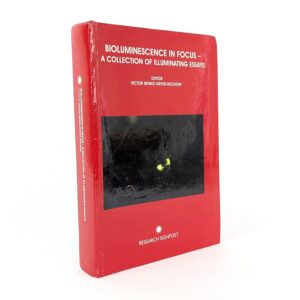
Bioluminescence in Focus: A Collection of Illuminating Essays
AU$50.00 Read MoreAdd to cartVictor Benno Meyer-Rochow
Trivandrum: Research Signpost, 2009. -

Tiger Territory: The History of Oberon Rugby League
AU$65.00 Read MoreAdd to cartWendy Casey
Mudgee: Landers Publishing, 2009. -


From River Banks to Shearing Shed: 30 Years with Flying Arts
AU$30.00 Read MoreAdd to cartMarilyn England
Brisbane: Suzanne Wickenden, 2009. -
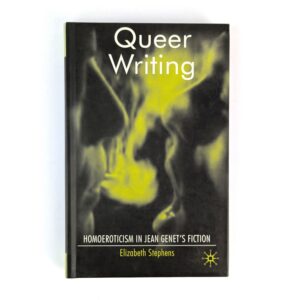
Queer Writing: Homoeroticism in Jean Genet’s Fiction
AU$50.00 Read MoreAdd to cartElizabeth Stephens
Basingstoke and New York: Palgrave Macmillan, 2009. -
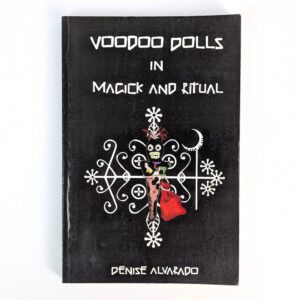
Voodoo Dolls in Magick and Ritual
AU$40.00 Read MoreAdd to cartDenise Alvardo
: Denise Alvardo, 2009. -

Orgasm
AU$80.00 Read MoreAdd to cartTony Ward
San Francisco: Last Gasp, 2009. -


Inter-Traveller: People Playing with the Dead
AU$60.00 Read MoreAdd to cartTomoko Konoike
Tokyo: Hatori Press, 2009. -

Adrian Feint: Cornucopia
AU$40.00 Read MoreAdd to cartAdrian Feint; Richard Heathcote
Adelaide: Wakefield Press, 2009. -
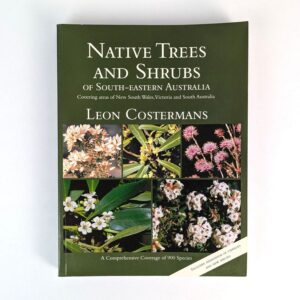
Native Trees and Shrubs of South-Eastern Australia: Covering Areas of New South Wales, Victoria and South Australia
AU$40.00 Read MoreAdd to cartLeon Costermans
Adelaide: Rigby, 2009. -


Plant Language Part I, II, II: Reader, Protocols and Recipes, Essential Oil Journeys
AU$300.00 Read MoreAdd to cartKurt Schnaubelt
San Rafael: Terra Linda Scent and Image, 2009.3 part aromatherapy / essential oil coursebook.
-

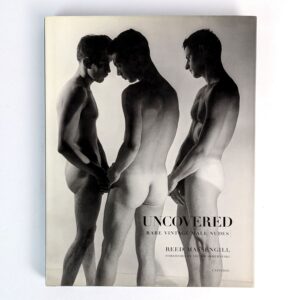
Uncovered: Rare Vintage Male Nudes
AU$250.00 Read MoreAdd to cartReed Massengill
New York: Universe Publishing, 2009.Collection of pre-Stonewall photography by Antonio Arabia, John S. Barrington, Earle Forbes, Robert Galster, Frederick Kovert, Plato, George Platt Lynes, Al Urban, Vulcan, and Don Whitman.
-
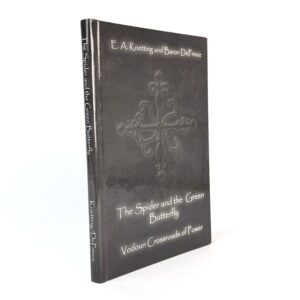
The Spider and the Green Butterfly: Vodoun Crossroads of Power
AU$150.00 Read MoreAdd to cartE. A. Koetting; Baron De Prince
: Eternal Ascent Publications, 2009. -
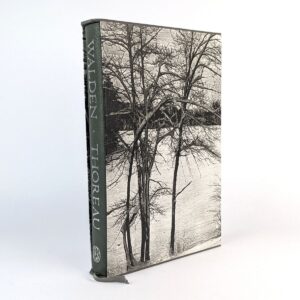
Walden; or, Life in the Woods
AU$300.00 Read MoreAdd to cartHenry D. Thoreau
London: The Folio Society, 2009.Walden, or life in the woods, by Henry David Thoreau, introduced by John Updike, with photographs by Herbert W. Gleason. FORD-SMITH 1556.
-

The Natural History of Selborne
AU$60.00 Read MoreAdd to cartGilbert White
London: The Folio Society, 2009.Introduction by Keith Thomas. FORD-SMITH 1557.
-
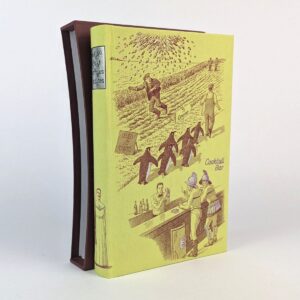
The Folio Book of Humorous Anecdotes
AU$20.00 Read MoreAdd to cartEdward Leeson
London: The Folio Society, 2009.Edited and with an introduction by Edward Leeson, drawings by Nick Hardcastle. FORD-SMITH 1250.
-

My Uncle’s Murder
AU$50.00 Read MoreAdd to cartWilliam Yang
Brisbane: Andrew Baker Art Dealer, 2009.Exhibition catalogue for a series of works recounting the story of Yang’s Chinese uncle being shot by the white manager on a North Queensland cane farm.
-
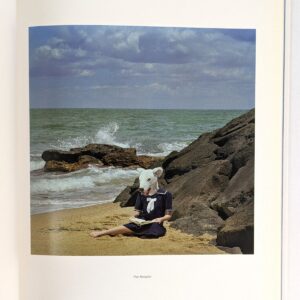
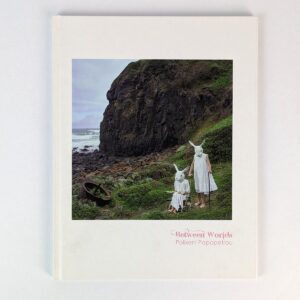
Between Worlds
AU$100.00 Read MoreAdd to cartPolixeni Papetrou
[Melbourne]: Polixeni Papapetrou, 2009.Catalogue for a series of photographic works by contemporary artist Polixeni Papetrou (1960- 2018).
-
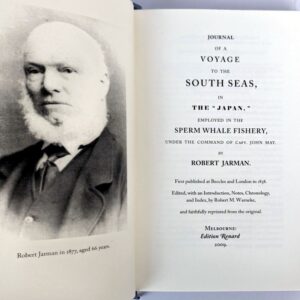

Journal of a Voyage to the South Seas, in the Japan,
AU$625.00 Read MoreAdd to cartRobert Jarman
Melbourne: Edition Renard, 2009.employed in the Sperm Whale Fishery, under the Command of Capt. John May. First published at Beccles and London in 1838. Edited, with an Introduction, Notes, Chronology, and Index, by Robert M. Warneke, and faithfully reprinted from the original. Special limited edition of 30 numbered copies within the overall limitation of 200 copies for sale. A new edition of the very rare account first published in two issues in 1838 and until now never reprinted – see FORBES 1104, also BAGNALL 2685 and FERGUSON 2526 (and 2526a). Robert Jarman, the son of a printer at Beccles, joined the crew as a young man of twenty years on a whaling voyage to the South Seas in 1831. During the next three to four years young Robert’s forecastle jottings were transformed into a lively and well-crafted tale. The primary theme is the hard, unrelenting search for whales, reflected in Jarman’s methodical recording of encounters with other whalers and elaborated with graphic descriptions of the excitements and dangers of whaling with the inevitable accidents, injuries, and tragic deaths. After cruising the Japan Sea, the ship reached the Hawaiian Islands at the end of October 1832 and anchored at Honolulu. “The author noted 18 whalers in port. He describes the harbor and the method by which ships were towed in, and the Honolulu Fort, and the town and its native people” (Forbes). He tells also of surviving gales and near disaster when the Japan was dismasted in a hurricane, which forced the stricken ship to Sydney for extensive repairs. Jarman gives an interesting account of Sydney, with perceptive comments on convicts and their management and the Aboriginals and their customs including the use of the boomerang. Subsequently the ship cruised around Rotuma, the Fiji Islands and New Zealand before returning to England. Along the way Jarman gives accounts of visits to bays and islands to trade for fresh provisions, and of longer stays at various ports for wood, water and to benefit the crew. A welcome respite from the rigors and grinding repetition of shipboard life, Jarman was obviously captivated by those of the natives who were friendly, and he perceptively and sympathetically described their modes of life, customs, and the effects of European intercourse and colonization. The scope and appeal of this book is enhanced by some lengthy passages on natural history, including observations on the social behaviour of sperm whales and encounters with sharks, other fish and birds. Because of several chance but pertinent events he was able to include commentaries on several dramatic episodes of Pacific maritime history, such as the Bligh mutiny and its aftermath, and recent massacres of ships crews by islanders — a constant fear for lightly-armed visiting whalers.
-
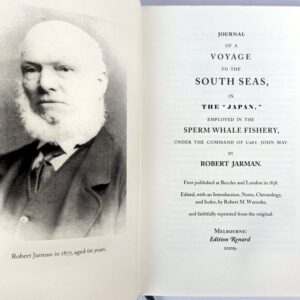

Journal of a Voyage to the South Seas, in the Japan,
AU$275.00 Read MoreAdd to cartRobert Jarman
Melbourne: Edition Renard, 2009.employed in the Sperm Whale Fishery, under the Command of Capt. John May. First published at Beccles and London in 1838. Edited, with an Introduction, Notes, Chronology, and Index, by Robert M. Warneke, and faithfully reprinted from the original. Deluxe limited edition of 70 numbered copies within the overall limitation of 200 copies for sale. A new edition of the very rare account first published in two issues in 1838 and until now never reprinted – see FORBES 1104, also BAGNALL 2685 and FERGUSON 2526 (and 2526a). Robert Jarman, the son of a printer at Beccles, joined the crew as a young man of twenty years on a whaling voyage to the South Seas in 1831. During the next three to four years young Robert’s forecastle jottings were transformed into a lively and well-crafted tale. The primary theme is the hard, unrelenting search for whales, reflected in Jarman’s methodical recording of encounters with other whalers and elaborated with graphic descriptions of the excitements and dangers of whaling with the inevitable accidents, injuries, and tragic deaths. After cruising the Japan Sea, the ship reached the Hawaiian Islands at the end of October 1832 and anchored at Honolulu. “The author noted 18 whalers in port. He describes the harbor and the method by which ships were towed in, and the Honolulu Fort, and the town and its native people” (Forbes). He tells also of surviving gales and near disaster when the Japan was dismasted in a hurricane, which forced the stricken ship to Sydney for extensive repairs. Jarman gives an interesting account of Sydney, with perceptive comments on convicts and their management and the Aboriginals and their customs including the use of the boomerang. Subsequently the ship cruised around Rotuma, the Fiji Islands and New Zealand before returning to England. Along the way Jarman gives accounts of visits to bays and islands to trade for fresh provisions, and of longer stays at various ports for wood, water and to benefit the crew. A welcome respite from the rigors and grinding repetition of shipboard life, Jarman was obviously captivated by those of the natives who were friendly, and he perceptively and sympathetically described their modes of life, customs, and the effects of European intercourse and colonization. The scope and appeal of this book is enhanced by some lengthy passages on natural history, including observations on the social behaviour of sperm whales and encounters with sharks, other fish and birds. Because of several chance but pertinent events he was able to include commentaries on several dramatic episodes of Pacific maritime history, such as the Bligh mutiny and its aftermath, and recent massacres of ships crews by islanders — a constant fear for lightly-armed visiting whalers.
